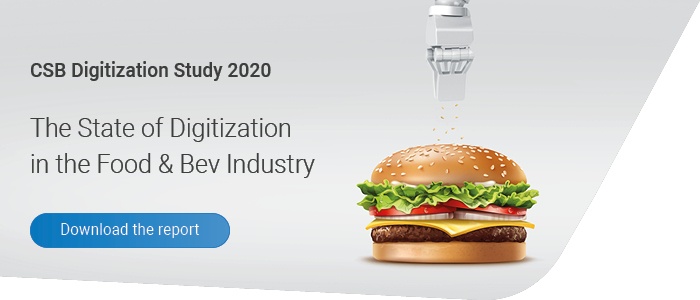Good planning is half the battle, many food companies still rely heavily on gut instincts when it comes to production planning. Or they can get by with simple solutions such as Excel and Access. But when a company grows, or the variety of products increases, a production planning system (PPS) becomes a necessary basic tool. At this point the question arises: Would you prefer a system integrated in the ERP software or perhaps your preference goes to a "best of breed" system?
The best the market has to offer for each and every individual requirement or all applications from the provider who offers the best overall solution with its ERP system? This is the core question of IT strategy that many food companies ask when it comes to production planning. Both philosophies are justified, but which ones are recommended in terms of functional scope, user-friendliness, integration and costs? Or to put it another way which approach will win in the duel of the systems?
Features: What do I really need?
Special solutions often offer more comprehensive functionalities than an integrated solution, but are these automatically the right features? Isn't it more important to have industry-specific functionalities on board than a set of functions that can't be used at all? The implementation of over the top features doesn't really hurt at first, but it makes little economic sense. After all, you don't need snow chains on the wheels of your pickup in the Californian summer. Many of the special features can be dispensed with, but the software must have some important features:
- The killer standard is of course the industry orientation of the software. Recipes, bills of materials, allergens, sell-by dates: all this has to be considered in planning. Optimal material flow and close integration of production planning with procurement, sales, disposition and warehouse management is also crucial.
- The production specifications and the individual production areas must be seamlessly integrated into the planning process. In the end, everything must be securely documented and traceable. Automated data capture and PPS must be perfectly coordinated.
- It is also particularly important that the software offers different planning horizons, such as long-term, medium-term and short-term planning scenarios. This means that all production resources such as labor, machine and material can be optimally planned, organized and controlled, even with volatile ordering behavior and a large variety of units.
Rating: The special solution scores points with many functions and features, the integrated solution concentrates on the important industry specifics. Both of them earned a point, making it 1:1.
User friendliness: How well can my employees work with the software?
Any software is only as good as the person who uses it - that's a truism. But one that has to be kept in mind time and again. If you want to get the most out of your IT, you have to make it as easy as possible for your employees to use it. In terms of user-friendliness, there are two clear arguments in favor of the integrated solution.
- The higher functional scope of special solutions usually means a higher complexity in terms of operation. This leads to stress and uncertainty of the users and increases the error rate. The lower the complexity, the better the employees can cope with it.
- Those opting for a complete solution, will also find themselves in the same software world and logic during production planning. There is also only one user interface. This makes it easier for employees to become familiar with the software and to optimize its use in daily operations.
Rating: Integrated solution takes the lead at halftime with 2:1.
Integration: How well does everything work together?
As digitalization progresses, so does the number of interfaces that a company has. Should the issue of integration not be rated too highly? Quite the contrary, because interfaces cause a maintenance effort that is no longer necessary with an integrated system. In most cases, they also create a uniform data basis that the special solution can only dream of. Even if all relevant subsystems are seamlessly integrated and the flow of information from and to the different systems is guaranteed: If a company has many interfaces, real-time integration is usually more a wish than a reality. What is negligible in areas such as human resources can become a real problem in production planning. For example, when the data from different production sites have to be processed and analyzed online. Integration plays a very important role in this process. It ensures that the data is more up-to-date and enables planning problems to be identified and addressed at an early stage.
Rating: In the key discipline of integration, the total solution plays its biggest trump card. 3:1.
Effort and costs: What do I have to pay for it?
The overall victory has been made, but does it also convince in terms of cost? An absolute yes! With an integrated solution, the costs and effort for implementation, optimization, maintenance and operation are always lower than those of the Best of Breed concept. It is less costly to maintain a system than multiple systems. The costs for employee training is also lower. Anyone who has ever been entrusted with this task knows the difficulties involved in turning the modules of different software providers into a functioning whole - and keeping them together at all times. A homogeneous IT landscape is after all more than the sum of its parts. At the latest with updates and release changes, every IT manager is likely to become aware of this right away.
Rating: The special solution is also not convincing in terms of costs. Final score: 4:1 for the integrated system.
Overall result: Integration beats special software
It is a clear result, because in the end the Best of Breed solution must clearly give way to the integrated system. Although it is often equipped with special applications, it cannot stand up against the complete solution. This is also supported by the decisive killer standard of integration in the food industry. This is an advantage that will continue to increase in the age of Industry 4.0. Who wants to have more interfaces than necessary and then do without real-time data? The integrated version also scores highly in terms of user-friendliness. In the end, they also win in terms of cost. The integrated solution almost always wins this one.
There is, however in all fairness, a limitation: The duel presented here is only based on the conditions in the food industry. In discrete production or in the case of variant manufacturers, the result is not likely to be quite so clear.


